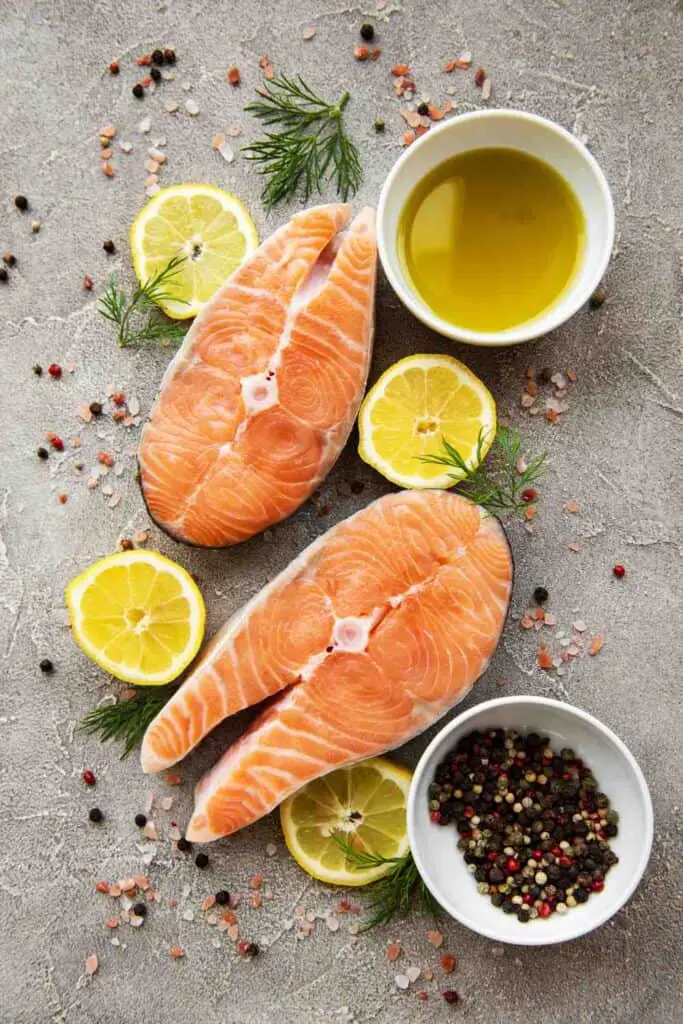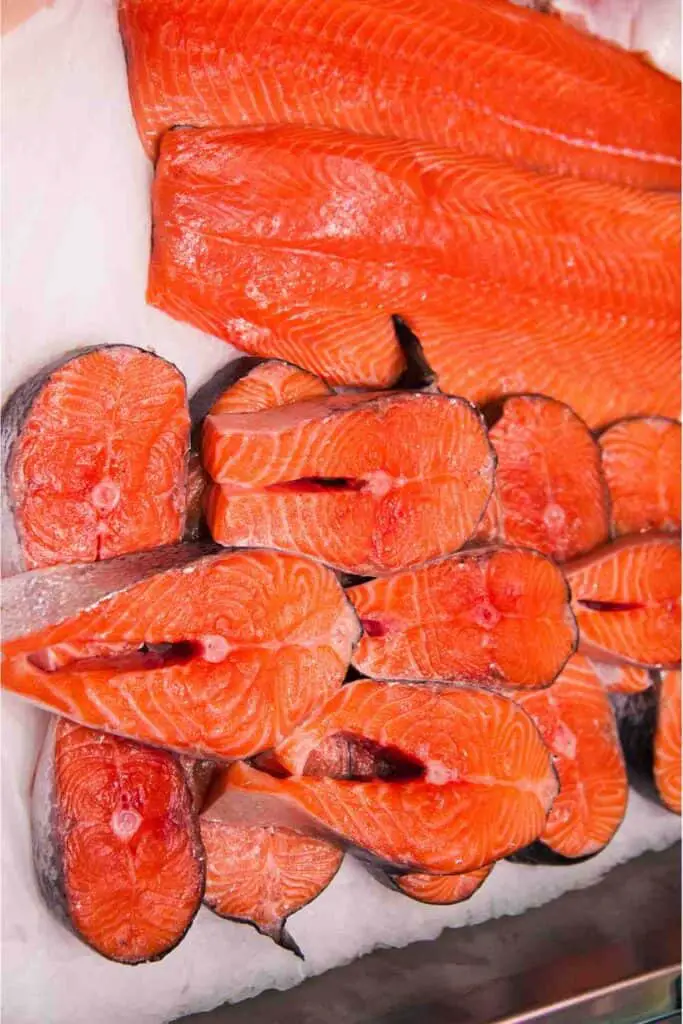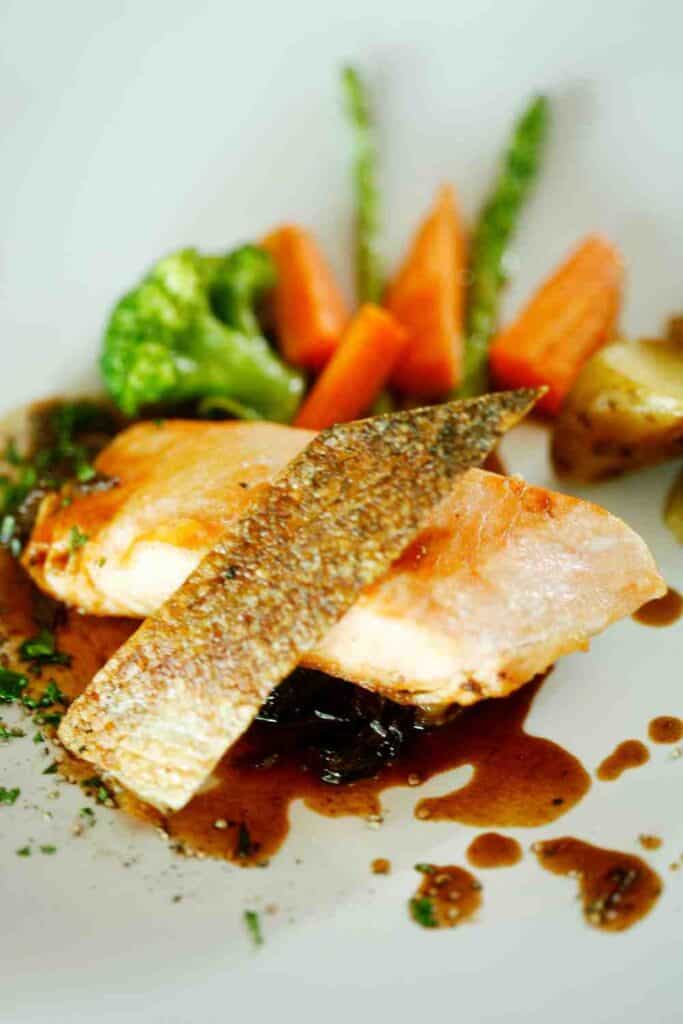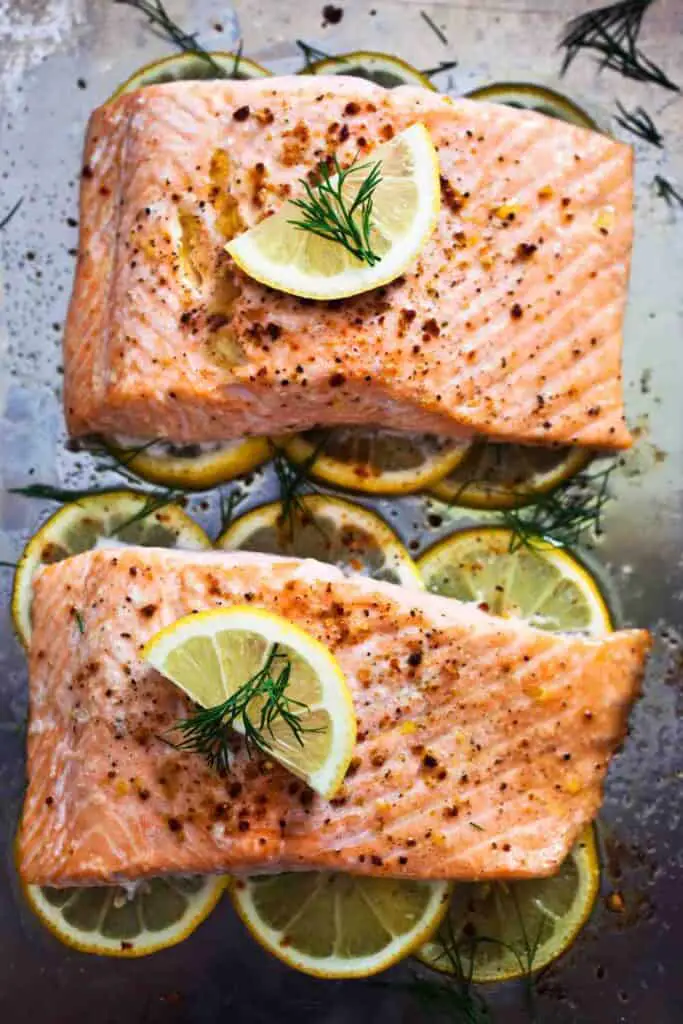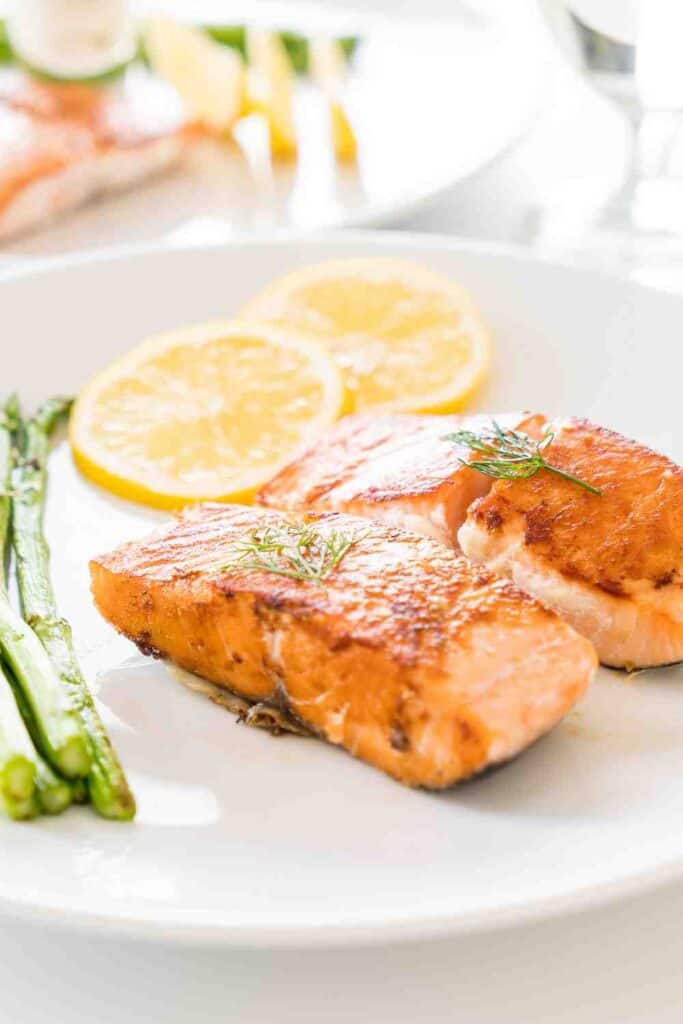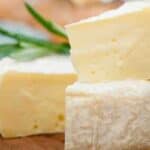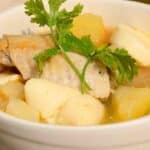What Does Salmon Taste Like, If you’re new to the world of seafood, let us introduce you to one of its royalty members: salmon. With its rich and succulent flavor, salmon has been reigning in the seafood kingdom for centuries.
But, you might be wondering, what exactly does salmon taste like? Well, buckle up folks, because we’re about to embark on a flavorful journey.
Some people describe salmon as having a mild, slightly sweet taste with a tender texture. Others claim it tastes like the ocean, with a hint of nuttiness and a touch of smokiness.
And, some folks swear that salmon tastes like pure heaven, with every bite sending them to flavor paradise.
But let’s not forget that salmon can also have a “fishy” taste, depending on its quality and how it’s prepared. But, no need to worry!
With our guide, you’ll learn how to choose the best quality salmon and cook it to perfection, leaving the “fishiness” behind.
So, are you ready to taste the magic of salmon? Let’s dive in!
What Does Salmon Taste Like?
Salmon has a mild, delicate, and slightly sweet taste. Its flesh is typically moist and tender, with a buttery texture. Depending on the type of salmon and how it is cooked, the taste can range from mild to strong.
Some describe it as having a subtle earthy or nutty flavor, while others perceive a slight smokiness or oceanic tang. Overall, the flavor of salmon can be quite versatile and enjoyable for seafood lovers.
Factors that Affect the Taste of Salmon
The flavor of salmon is influenced by a variety of factors, and it’s essential to understand them if you want to fully appreciate its taste. Here are some of the most significant factors that affect the taste of salmon:
- Type of Salmon: There are several species of salmon, and each has a distinct flavor profile. Some species are milder in taste, while others are more robust and flavorful.
- Feed: The type of food the salmon eats greatly affects its taste. Farmed salmon is often fed a diet of pellets, which can impact its flavor. On the other hand, wild-caught salmon feeds on a natural diet of small fish, plankton, and krill, giving it a more natural, cleaner taste.
- Age: The age of the salmon also plays a role in its taste. Younger salmon have a milder flavor, while older salmon have a stronger, more pronounced taste.
- Fat Content: Fat content is one of the most significant factors that affect the taste of salmon. Salmon with higher levels of fat have a creamier, richer flavor, while leaner salmon have a milder taste.
- Freshness: The freshness of the salmon is crucial in determining its flavor. Fresh salmon has a bright, vibrant flavor, while older or stale salmon can have a “fishy” taste.
Different Types of Salmon and Their Flavor Differences
One of the most significant factors that affect the taste of salmon is the type of salmon you choose. Let’s take a closer look at some of the most common types of salmon and their flavor differences:
Sockeye Salmon
Sockeye salmon has a rich, full flavor, with a firm and meaty texture. It’s often considered one of the best-tasting salmon species and is prized for its vibrant red color and high omega-3 content.
Coho Salmon
Coho salmon has a milder flavor than sockeye, with a slightly sweeter taste. It’s often described as having a more delicate flavor and a tender, flaky texture.
King (Chinook) Salmon
King salmon is considered the most flavorful of all the salmon species, with a rich, buttery taste and a high-fat content. It has a dense, meaty texture and is often the most expensive type of salmon.
Pink (Humpy) Salmon
Pink salmon is the most abundant and economical of the salmon species. It has a mild, slightly sweet flavor and a soft, flaky texture.
Atlantic Salmon
Atlantic salmon is the most commonly farmed species and is widely available in supermarkets. Its flavor can vary depending on the diet it’s fed, but it’s often described as having a mild, slightly sweet taste with a tender texture.
By knowing the flavor differences between different types of salmon, you can choose the type that best suits your taste preferences and culinary needs. Whether you prefer a rich, full flavor or a mild, delicate taste, there’s a type of salmon out there for you!
How to Cook Salmon to Enhance its Flavor
Cooking salmon can sometimes be a challenge, but with the right techniques, you can enhance its natural flavor and create a delicious meal. Here are some tips for cooking salmon to enhance its flavor:
Choose the right cooking method:
Grilling, baking, sautéing, and poaching are all popular methods for cooking salmon. Each method brings out different flavors and textures, so choose the one that best suits your taste preferences.
Season with care:
Use simple seasonings like salt, pepper, lemon, and herbs to enhance the natural flavor of salmon. Be careful not to overpower the flavor with heavy spices.
Add a touch of acid:
Acidic ingredients like lemon, vinegar, or wine can help to brighten the flavor of salmon. Try marinating salmon in lemon juice for 30 minutes before cooking to enhance its flavor.
Cook at the right temperature:
Overcooking salmon can result in a dry, tough texture and a loss of flavor. Aim to cook salmon until it reaches an internal temperature of 145°F, which should take around 8-10 minutes, depending on the thickness of the fish.
Rest before serving: Allowing salmon to rest for a few minutes before serving allows the juices to redistribute, resulting in a more flavorful and tender piece of fish.
Pairing Salmon with Herbs, Spices, and Sauces
Pairing salmon with the right herbs, spices, and sauces can enhance its natural flavor and create a delicious and well-balanced meal. Here are some suggestions for pairing salmon with complementary ingredients:
Herbs
Fresh herbs like dill, basil, cilantro, and parsley pair well with salmon and can add a fresh, bright flavor.
Spices
Spices like garlic, ginger, cumin, and paprika can add depth and warmth to the flavor of salmon. Try incorporating these spices into a marinade or rub to add an extra layer of flavor.
Sauces
Sauces like hollandaise, beurre blanc, or a tangy mustard sauce can add richness and balance to the flavor of salmon. Try drizzling a sauce over the fish just before serving for an extra burst of flavor. You can try Tex Mex Paste also.
Vegetables
Pairing salmon with fresh, seasonal vegetables like asparagus, carrots, or roasted red peppers can add color, texture, and flavor to your meal.
Grains
Serving salmon with grains like quinoa, rice, or couscous can add substance and texture to your meal. Grains can also help to soak up the flavors of the sauce and spices.
By pairing salmon with complementary ingredients, you can create a delicious and well-rounded meal that brings out the best in its natural flavor. Whether you prefer a light and fresh flavor or a rich and decadent taste, there’s a pairing out there for you!
Salmon Taste Comparison: Farmed vs. Wild-Caught
One of the most common debates in the world of salmon is the comparison between farmed and wild-caught salmon. Both types of salmon have their unique flavor profiles, and the taste can vary depending on several factors. Here’s a comparison of the taste of farmed and wild-caught salmon:
Farmed Salmon
Farmed salmon is typically more widely available and affordable than wild-caught salmon. Its flavor can vary depending on the type of feed it’s given, but it’s often described as having a mild, slightly sweet taste with a tender texture. Farmed salmon is also typically fattier than wild-caught salmon, which can add richness to its flavor.
Wild-Caught Salmon
Wild-caught salmon is prized for its rich, full flavor, with a firm and meaty texture. Its flavor is influenced by its diet, which consists of smaller fish and crustaceans, resulting in a more pronounced taste. Wild-caught salmon is often considered one of the best-tasting salmon species and is prized for its vibrant color and high omega-3 content.
In conclusion, both farmed and wild-caught salmon have their unique flavor profiles, and the taste can vary depending on several factors, such as the type of feed, the species, and the location.
Ultimately, the choice between farmed and wild-caught salmon comes down to personal preference, budget, and availability. Whether you prefer a mild, sweet flavor or a rich, full flavor, there’s a type of salmon out there for you!
Popular Salmon Recipes to Try
Salmon is a versatile and delicious fish that can be cooked in a variety of ways to bring out its natural flavor. Whether you prefer your salmon grilled, baked, sautéed, or smoked, there’s a recipe out there for you. Here are some popular salmon recipes to try:
Grilled Salmon
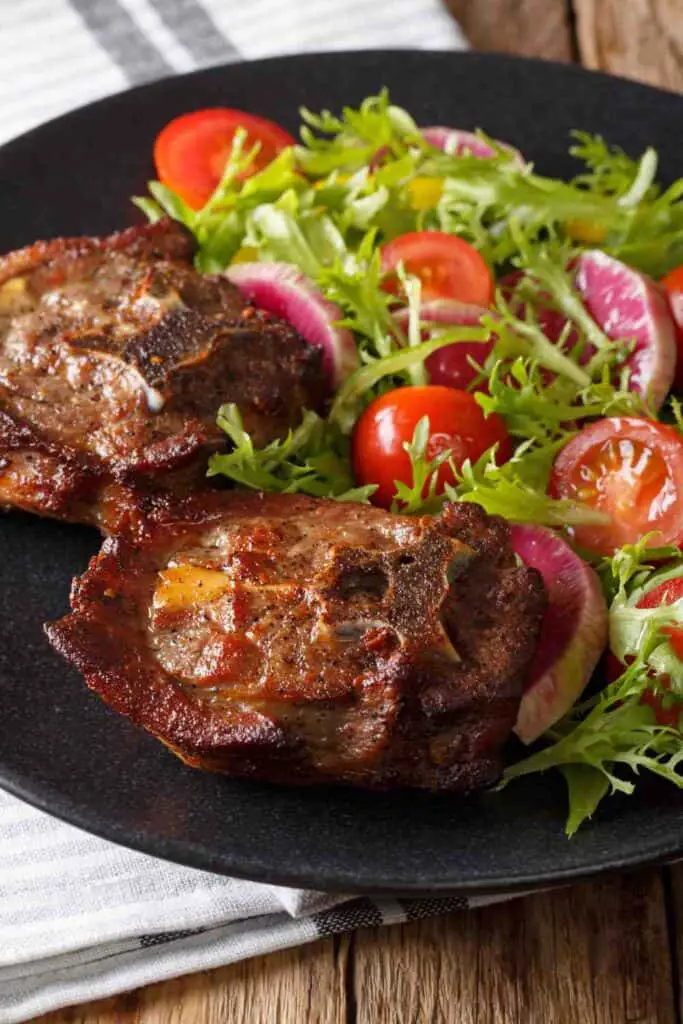
Grilled salmon is a classic recipe that is easy to make and packed with flavor. Simply season the salmon fillet with salt, pepper, and lemon, and grill it for 8-10 minutes, until it’s cooked through.
Baked Salmon
Baked salmon is a quick and easy way to cook salmon that results in a juicy and flavorful piece of fish. Simply season the salmon fillet with salt, pepper, and herbs, wrap it in foil, and bake it for 12-15 minutes.
Sautéed Salmon
Sautéed salmon is a fast and flavorful way to cook salmon that is perfect for a quick weeknight meal. Simply season the salmon fillet with salt and pepper, heat a little oil in a pan, and sauté the salmon for 4-5 minutes on each side, until it’s cooked through.
Smoked Salmon
Smoked salmon is a flavorful and delicious way to enjoy salmon that is perfect for entertaining or special occasions. Simply smoke the salmon fillet over wood chips for 30-40 minutes, until it’s cooked through and infused with a smoky flavor.
How to Choose the Best Quality Salmon for Optimal Flavor
When it comes to cooking salmon, the quality of the fish can make all the difference in terms of flavor and texture. Here’s a guide to help you choose the best quality salmon for optimal flavor:
- Look for Freshness: When shopping for salmon, look for a fillet that is firm and has a shiny, moist appearance. If the salmon has a dull or dry appearance, it’s probably not fresh.
- Check for a Sweet Smell: Fresh salmon should have a sweet, ocean-like smell. If it has a strong, fishy odor, it’s probably not fresh.
- Consider the Source: When shopping for salmon, consider where it was sourced from. Wild-caught salmon is typically considered to be of higher quality than farmed salmon, but it can also be more expensive.
- Choose the Right Cut: When shopping for salmon, consider the cut you want to buy. Center-cut fillets are the best quality, while tailpieces and belly pieces are typically less expensive and have a stronger flavor.
- Know the Season: The flavor of salmon can vary depending on the season, so be sure to choose salmon that is in season for the best flavor.
How To Tell If It Has Gone Bad By Taste
It’s important to make sure that the salmon you’re about to cook and eat is fresh, as spoiled salmon can cause food poisoning. Here’s a guide to help you tell if your salmon has gone bad by taste:
- Check for an Off Taste: Fresh salmon should have a mild, sweet flavor. If your salmon has an off taste, it may be spoiled.
- Check for an Off Smell: Fresh salmon should have a sweet, ocean-like smell. If your salmon has a strong, fishy odor, it may be spoiled.
- Check for a Slimy Texture: Fresh salmon should have a firm, moist texture. If your salmon has a slimy texture, it may be spoiled.
- Check for Discoloration: Fresh salmon should have a vibrant color. If your salmon has turned gray or yellow, it may be spoiled.
If you suspect that your salmon may be spoiled, it’s best to err on the side of caution and not eat it. Spoiled salmon can cause food poisoning, and it’s not worth the risk.
The Health Benefits of Including Salmon in Your Diet
Salmon is a nutrient-rich fish that is a great addition to any healthy diet. Here are some of the key health benefits of eating salmon:
- Rich in Omega-3 Fatty Acids: Salmon is one of the best sources of Omega-3 fatty acids, which have been shown to have several health benefits, including reducing inflammation and improving heart health.
- High in Protein: Salmon is a great source of high-quality protein, which is essential for building and repairing muscle tissue.
- Good for Brain Health: Omega-3 fatty acids found in salmon have been linked to improved brain function and cognitive performance.
- Supports Joint Health: Omega-3 fatty acids found in salmon have been shown to reduce inflammation and support joint health.
- Supports Eye Health: Omega-3 fatty acids found in salmon have been linked to improved eye health and may help reduce the risk of age-related eye diseases.
By including salmon in your diet, you can enjoy these health benefits and help support your overall health and well-being. Whether you’re grilling, baking, sautéing, or smoking your salmon, incorporating this nutrient-rich fish into your diet is a great way to support your health and enjoy a delicious, satisfying meal.
Frequently Asked Questions about Salmon and Its Flavor
Is farmed salmon lower in quality than wild-caught salmon?
Farmed salmon and wild-caught salmon can vary in quality depending on the conditions in which they are raised or caught. Farmed salmon is typically less expensive than wild-caught salmon, but it can also be lower in quality and have a different flavor profile.
How does the flavor of salmon vary between wild-caught and farmed salmon?
Wild-caught salmon typically has a more robust flavor and is considered to be of higher quality than farmed salmon. Farmed salmon is typically milder in flavor and can have a more uniform taste.
How can I enhance the flavor of my salmon?
There are many ways to enhance the flavor of salmon, including cooking it with herbs, spices, and sauces, or marinating it before cooking. Pairing salmon with complementary flavors, such as lemon and dill, can also help to enhance its flavor.
How can I tell if my salmon has gone bad?
To tell if your salmon has gone bad, check for an off taste, an off smell, a slimy texture, and discoloration. If you suspect that your salmon may be spoiled, it’s best to err on the side of caution and not eat it.
How often should I eat salmon for optimal health benefits?
The American Heart Association recommends eating at least two servings of fatty fish, such as salmon, per week for optimal health benefits. It’s important to choose high-quality, fresh salmon to ensure that you’re getting the most nutritional value from your meal.
Conclusion
Salmon is a versatile, delicious, and nutritious fish that is a great addition to any diet. With its rich flavor profile, salmon is a great choice for those who want to enjoy a delicious meal while also supporting their health.
Whether you prefer wild-caught or farmed salmon, there are many ways to enhance its flavor and enjoy it in a variety of dishes. So embrace the delicious flavor of salmon and enjoy all the health benefits that this nutrient-rich fish has to offer.
